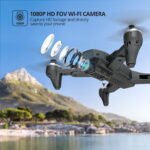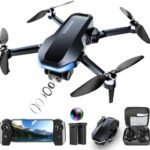Introduction
What is ebee?
ebee, commonly referred to as a drone in the sUAS (small Unmanned Aerial System) category, stands out as an advanced tool used for various surveying, mapping, and monitoring tasks. It is particularly recognized for its efficiency in collecting precise aerial data in both urban and rural settings. This drone is designed for professionals in industries like agriculture, construction, and environmental monitoring, proving itself to be a versatile ally for those who need reliable aerial insights. What’s fascinating about the ebee drone is its compact design and user-friendly interface, making it accessible for both seasoned professionals and beginners. For example, I recall the first time I set up an ebee for a small agriculture project. The entire setup took about 20 minutes, and soon I was capturing high-resolution images of the fields, providing vital insights into crop health that were previously challenging to acquire.
Benefits of using ebee
The benefits of using the ebee drone are numerous, and they can significantly enhance the efficiency and accuracy of various operations. Here are some notable advantages:
- Precision Mapping: The ebee generates high-resolution maps that allow for detailed analysis. This is invaluable for industries like agriculture, where crop health can be visually assessed through vegetation indices.
- Time and Cost Efficiency: Traditionally, collecting field data involved significant manpower and time. The ebee dramatically reduces this burden, enabling users to cover large areas quickly. A fellow agronomist shared how he could survey a 50-acre farm in under an hour, which would have taken days using manual techniques.
- Real-time Data Collection: With the ability to collect data on-the-fly, the ebee supports immediate decision-making. For instance, farmers can assess irrigation needs or pest infestations almost instantly after flying the drone.
- Versatility: The ebee drone is not just for agriculture; it has applications in construction, forestry, environmental science, and more. This versatility allows users from various industries to utilize its capabilities tailored to their specific needs.
- Safety and Compliance: Utilizing drones minimizes risks associated with climbing tall structures or traversing rough terrains. The ebee allows for safe data collection from a distance, adhering to safety regulations within various operational contexts.
Incorporating the ebee into your operations opens up a world of possibilities. As you start to leverage drone technology, you’ll notice an evolution in how you approach projects, leading to enhanced productivity and results. Imagine pinpointing problem areas in your crops without stepping into the fields, or generating 3D models of construction sites with just a few clicks on your computer. 💡 With these advantages in mind, you might be wondering how to get started with the ebee. Understanding the setup process and navigating its intuitive interface will pave the way for you to unleash its full potential. Let’s dive deeper into how you can effortlessly integrate this technology into your work!
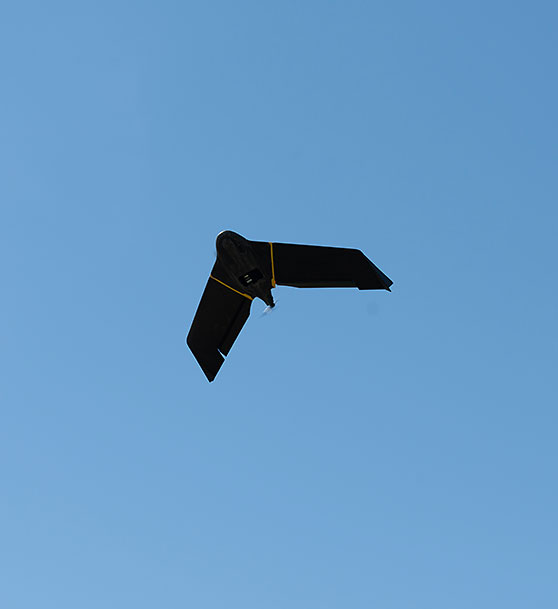
Getting Started with ebee
Setting up ebee
Now that you’re excited about the benefits that the ebee drone brings to the table, let’s dive into the nitty-gritty of getting it up and running! Setting up your ebee is a straightforward process, making it accessible for everyone, regardless of experience level. I remember my first setup vividly; it felt like I was assembling a puzzle, aligning parts perfectly for a rewarding final reveal. So, let’s break it down step-by-step:
- Unboxing and Components: Begin by carefully unpacking your ebee drone. You’ll typically find the following components:
- The ebee drone body
- Battery packs
- Controller
- Propellers
- A convenient carrying case
- Battery Installation: Once you’ve familiarized yourself with the components, it’s time to install the battery. Simply locate the battery compartment on the underside of the drone, slide in the battery, and ensure it locks in securely.
- Propeller Attachment: Next, you’ll attach the propellers. This is a simple process but be sure to follow the directional indicators on the drone, as getting the props mixed up can affect flight performance.
- Software Setup: The ebee operates using specialized software for flight planning and data collection. Download the necessary applications onto your computer or tablet and ensure your drone is updated to the latest firmware. This proactive step helps avoid technical glitches later on.
- Calibrating the Drone: Before the first flight, you’ll need to calibrate the ebee. This process involves setting the compass and achieving a stable GPS connection. You wouldn’t want the drone wandering off course during your first survey!
This setup process might seem overwhelming at first, but with a bit of practice, you’ll have it down in no time. Trust me, the anticipation of seeing your first aerial shots will make it all worthwhile! 🚀
Navigating the ebee interface
Once your ebee is set up and ready for takeoff, understanding how to navigate its interface will enhance your user experience. The interface is designed to be intuitive, allowing you to focus more on your mission and less on figuring out how to operate it. Here’s a simple overview of the key features you’ll encounter:
- Flight Planning Tools: The interface provides user-friendly options for creating your flight plans. You can outline specific areas you want to cover and set parameters such as altitude and overlap. This is where you get to map out your mission like a pro!
- Live Data Feed: While flying, you’ll benefit from a live data feed showcasing real-time information, including battery life, GPS status, and aerial imagery. It’s comforting to keep an eye on these metrics, especially during the first few flights.
- Post-Flight Data Analysis: After your mission, navigating through the interface to analyze your collected data is seamless. You can quickly assess the quality of your images, generate maps, and examine vegetation indices. I recall instantly being impressed with the clarity of the images I retrieved after my first flight—it was like seeing magic unfold!
- User Support: Should you ever find yourself needing assistance, the interface comes equipped with comprehensive tutorials and a support community. This is a fantastic resource for new users, enabling you to learn from experienced operators.
All in all, the setup process and user interface contribute to a streamlined experience, allowing you to channel your focus into what truly matters—capturing high-quality data while enjoying the journey. Let’s journey into understanding the impressive features that make ebee the ideal choice for your mapping needs!
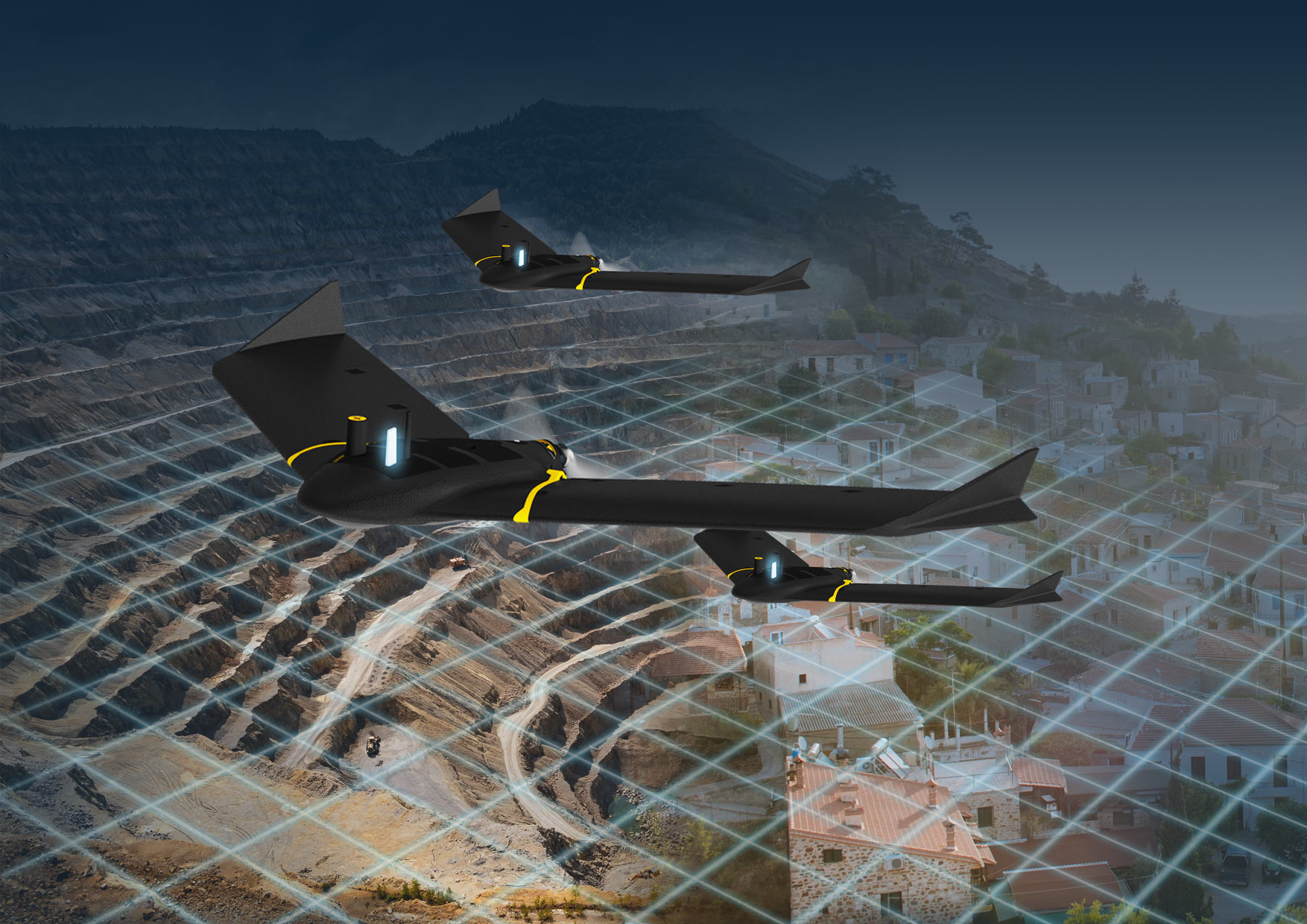
Understanding ebee Features
Drone capabilities
As you get more familiar with your ebee, it’s essential to appreciate the remarkable drone capabilities that set it apart from others in the market. These features allow professionals to capture high-quality data efficiently, truly making the drone worth your investment.
- Flight Range and Durability: The ebee boasts a flight time of up to 90 minutes on a single charge, allowing you to cover extensive areas without interruption. This is particularly beneficial in applications like agriculture, where vast fields can be surveyed without the need for frequent recharging. I recall being astonished the first time I flew my ebee for a full hour without losing battery life—such peace of mind was game-changing!
- High-Resolution Imaging: Equipped with a state-of-the-art camera, the ebee captures stunning aerial images and videos with resolutions that can go up to 20 megapixels. This level of detail is indispensable when performing inspections or assessments that require a keen eye for accuracy. Just picture yourself identifying water stress in crops from an aerial view—pretty incredible!
- Advanced Navigation and Stability: Thanks to its GPS and inertial measurement unit (IMU), the ebee delivers precise navigation and stable flights, even in challenging wind conditions. This is crucial during real-world operational scenarios, ensuring data integrity and smooth capture regardless of the environment. One time, I took my drone out on a breezy day, and the stability it maintained truly impressed me!
In summary, these drone capabilities make the ebee a powerhouse for data collection, paving the way for innovative applications across various industries.
Mapping and data analysis tools
Transitioning from drone capabilities, the mapping and data analysis tools offered by ebee amplify its usefulness. These tools enable users to translate raw aerial images into actionable insights seamlessly.
- Flight Planning Software: Using advanced flight planning software, you can create detailed flight paths customized for your specific project needs. The intuitive drag-and-drop interface allows you to draw out polygons around areas of interest, ensuring complete coverage of the terrain. I distinctly remember the first time I sketched out my flight path—seeing it come to life in the air was an exhilarating experience!
- Automated Processing: After capturing the images, the automated processing feature takes center stage. The software stitches together hundreds of photographs into a cohesive map or 3D model, saving you countless hours of manual work. Trust me; this automation is a real game-changer for professionals who need to deliver results quickly to stakeholders!
- Data Visualization: Once your mapping is complete, the data analysis tools allow for powerful visualization options, such as thermal and multispectral imaging. These features can highlight areas of stress in crops or assess heat distribution in buildings. For instance, in agricultural projects, visualizing NDVI (Normalized Difference Vegetation Index) data can identify which parts of a field are underperforming or need attention.
To wrap things up, the ebee’s remarkable drone capabilities, combined with its robust mapping and data analysis tools, provide you with the power to tackle diverse projects efficiently. Having these features at your fingertips opens endless possibilities for capturing and interpreting data in ways you might never have thought possible. Next, let’s dive into how to utilize these powerful capabilities specifically for agriculture!

Utilizing ebee for Agriculture
Crop monitoring with ebee
With a solid understanding of the ebee’s features, it’s clear that this drone is a powerhouse, especially in the field of agriculture. One of the standout applications is crop monitoring, which can completely revolutionize how farmers manage their fields. Imagine this: every time I would inspect my crops, I spent hours walking the fields, looking for signs of growth issues. Now, with the ebee, that entire process is transformed. Here’s how you can effectively use the drone for crop monitoring:
- Aerial Surveys: Flying your ebee over your fields provides high-resolution images that allow you to analyze plant health from above. You can identify stressed areas that might not be visible at ground level. The aerial perspective offers a complete view of crop conditions, which can be invaluable for targeting interventions.
- Vegetation Indices: Utilize specialized multispectral cameras to assess the health of your crops through indices like NDVI (Normalized Difference Vegetation Index). This quantitative analysis provides a clear visual representation of plant health, helping you to make informed decisions about watering, fertilizers, or pest management. I remember feeling relieved when I could check NDVI maps before my crops started showing visual symptoms—catching issues early can save you a lot of stress and resources.
- Data Consistency: Regular flights help you establish a pattern over time, allowing you to track growth stages, yield predictions, and variability across your fields. This consistent data collection can also be crucial for meeting agricultural grants or certifications since it offers solid documentation of your practices.
By integrating drone technology into your crop monitoring routine, you gain new insights that can enhance overall crop management and productivity.
Precision farming techniques using ebee
Building upon effective crop monitoring, the ebee empowers farmers to adopt precision farming techniques—approaches that capitalize on data to optimize inputs and outputs efficiently.
- Targeted Resource Application: One of the most significant advantages of using ebee in precision farming is the ability to apply resources—be it water, fertilizers, or pesticides—precisely where they are needed. With detailed aerial maps highlighting soil variability and crop health, you can adjust resource allocation, reducing waste and costs significantly. I recall a time when I used my ebee data to pinpoint specific areas of a field that needed more irrigation, saving money and ensuring every plant thrived!
- Field Variability Mapping: Use the drone’s data to create detailed maps of your fields, identifying different zones with varying productivity. By understanding these variations, you can manage each zone differently, leading to more tailored farming strategies that enhance overall yield.
- Enhanced Decision Making: Armed with the insights gathered from the ebee, you can make informed operational decisions. This could mean choosing which areas to harvest first, determining optimal planting times, or efficiently scheduling labor resources.
Adopting precision farming techniques using the ebee can not only lead to increased crop yields and reduced input costs but is also better for the environment. By using resources more thoughtfully, you contribute to sustainable agriculture practices. In conclusion, the incorporation of the ebee into agricultural operations enables you to monitor crops effectively and apply precision farming techniques. This results in a significant boost to productivity, sustainability, and ultimately, profitability in your farming ventures. Next up, let’s uncover how the ebee is making waves in environmental applications!
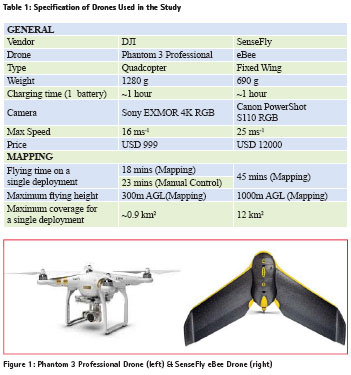
ebee for Environmental Applications
Monitoring biodiversity with ebee
As we explore the diverse applications of the ebee drone, its potential to assist in environmental monitoring shines brightly. One key area where the ebee truly excels is in monitoring biodiversity. This capability is essential for researchers, conservationists, and land managers looking to protect and preserve ecosystems. Using the ebee for biodiversity monitoring can transform how we gather data about flora and fauna in various habitats. Here’s how it works:
- Aerial Surveys of Ecosystems: The high-resolution imagery captured by the ebee allows researchers to conduct aerial surveys over forests, wetlands, and other habitats. These surveys can reveal critical information about plant distribution, species diversity, and habitat health. During my own fieldwork, I utilized the ebee to survey a local wetland. The bird’s-eye view helped me locate rare plant species and insect populations that would have otherwise gone unnoticed.
- Species Identification: Equipped with specialized cameras, the ebee can capture images that can help in identifying plant species and tracking animal habits. For instance, by monitoring nesting sites or tracking migratory patterns, researchers can assess the impact of climate change on species interactions. I once collaborated with a researcher who used the ebee to monitor a migratory bird population. The data we gathered provided invaluable insights into their nesting habits and the effects of surrounding habitat changes.
- Tracking Changes Over Time: Regular flights allow for the establishment of baseline data, making it easier to monitor changes in biodiversity over time. Detecting shifts in plant cover or species presence can indicate larger environmental changes, such as habitat destruction or climate variability. This long-term data collection is vital for effective conservation planning.
Using the ebee for biodiversity monitoring brings a new level of efficiency and effectiveness to conservation efforts, allowing stakeholders to respond promptly to environmental challenges.
Tracking changes in land use
Another significant environmental application of the ebee is its ability to track changes in land use. As urbanization and development increase, monitoring these changes becomes crucial for sustainable land management and urban planning. Here are some ways the ebee effectively captures and analyzes land use changes:
- High-Resolution Mapping: The ebee’s ability to capture high-resolution images provides detailed insights into land cover and land use types. With this data, urban planners can easily visualize changes in land use over time, such as the conversion of agricultural land to urban spaces or the expansion of green areas. I remember working with a city planner who utilized the drone to create comprehensive visual reports that informed community discussions about future urban development.
- Environmental Impact Assessments: Tracking land use changes is essential for conducting environmental impact assessments. The ebee can assist in evaluating potential ecological consequences before development projects begin, ensuring that sustainable practices are at the forefront. By highlighting vital areas such as wetlands or forested regions, stakeholders can make informed decisions that balance development with conservation.
- Identifying Patterns and Trends: Regular flights and data analysis help identify patterns and trends in land use changes, providing valuable insights over time. This information aids in long-term planning, enabling communities to create sustainable development strategies that respect existing ecosystems. I’ve seen projects prosper when planners can rely on accurate data to guide their decisions.
In summary, the ebee drone is a powerful tool for monitoring biodiversity and tracking changes in land use. Its ability to capture high-quality aerial data not only enhances our understanding of ecological dynamics but also informs responsible land management practices. As we move forward, let’s explore how the ebee enhances security with its surveillance applications!

Enhancing Security with ebee
Surveillance applications of ebee
Transitioning from environmental applications, the ebee drone also plays a pivotal role in enhancing security across various sectors. Its aerial capabilities offer unique surveillance applications that can bolster physical security and threat assessment. Picture this: residential areas, sprawling campuses, or even commercial properties can benefit immensely from the consistent monitoring provided by the ebee. Here’s how it can be effectively utilized for surveillance:
- Wide-Area Coverage: The ebee allows security personnel to monitor large areas more efficiently than ever before. With its impressive flight range and extended battery life, the drone can patrol vast properties, covering more ground than traditional methods while offering a top-down perspective. During an event security operation I was involved in, the ebee was dispatched to fly over the entire venue, providing real-time visual feedback that helped us respond more effectively to potential incidents.
- High-Resolution Imaging: With high-resolution cameras on board, the ebee can capture detailed images and video footage. This feature is invaluable for identifying unauthorized activities or intruders in restricted areas. The clarity of the surveillance footage ensures that nothing goes unnoticed—a critical aspect of incident management. For example, I’ve seen firsthand how clear images from drone surveillance helped identify security breaches that would have otherwise remained hidden.
- Rapid Response Capabilities: Drones can be deployed quickly, providing an immediate response during incidents. Whether it’s a security alert in a commercial district or an unusual gathering on private property, the ebee can be airborne in minutes, relaying live video feeds back to security teams on the ground. This instant data availability plays a crucial role in making quick decisions during emergencies.
Utilizing the ebee for surveillance not only enhances security measures but also fosters a greater sense of safety within communities and organizations. However, with these advantages come necessary considerations regarding security measures for drone operation.
Security measures for ebee operation
To maintain safe and effective operations while using the ebee for security purposes, implementing robust security measures is essential. Here are some key steps to ensure operational integrity:
- Regulatory Compliance: It’s crucial to adhere to national and local regulations governing drone operations. This includes obtaining the necessary permits and licenses for conducting surveillance missions. Knowing the legal landscape can help avoid potential fines and legal issues later on. Ensuring compliance not only protects your team but also promotes responsible drone usage in your community.
- Data Security: Given the sensitive nature of surveillance data, maintaining data security is vital. Utilize encryption technologies to protect the footage captured by the drone, ensuring only authorized personnel have access. I personally emphasize maintaining a secure data transfer protocol to safeguard information, especially when working on sensitive projects.
- Pilot Training and Certification: Investing in thorough training for drone operators is essential to ensuring both safety and efficiency. Certified pilots are better equipped to handle challenges that may arise during flight, including navigating complex environments and reacting to unanticipated situations. Sharing experiences of trained pilots in our team demonstrated how preparedness can lead to smooth operations.
- Emergency Protocols: Establishing emergency protocols for incidents such as loss of communication, erratic behavior, or critical failures can enhance overall operational safety. Training team members on how to respond to these scenarios safeguards both personnel and assets.
In conclusion, leveraging the ebee for security surveillance applications provides numerous advantages, enhancing safety and response capabilities. However, it’s imperative to implement thorough security measures to maintain safe and responsible operation. As we continue our journey, let’s investigate some common challenges that users face with the ebee and how to troubleshoot them effectively!
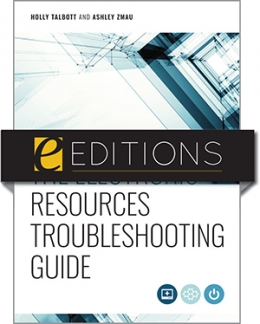
Troubleshooting Common Issues with ebee
Handling technical glitches
As much as we love the capabilities of the ebee drone, occasionally, you might encounter technical glitches that can impede your operations. Acknowledging that these issues can happen is the first step to managing them effectively. Fortunately, there are several methods to troubleshoot and resolve common technical problems quickly and efficiently.
- Firmware Updates: One of the most effective ways to prevent technical issues is to regularly check for firmware updates. Keeping your ebee updated ensures that you have the latest bug fixes and enhancements. I vividly remember a time early in my use of the ebee when I experienced inconsistent flight behavior. A quick update resolved those hiccups, allowing me to fly smoothly once again!
- GPS Signal Loss: If you ever find your drone losing GPS signal, especially in areas with dense foliage or urban environments, consider performing a compass calibration. A re-calibration helps improve the drone’s navigation capabilities. Just be patient—it can take a few moments for the GPS to lock on again! Additionally, flying in open areas can minimize these interruptions.
- Battery Issues: It’s not uncommon for users to encounter battery-related problems. Always ensure that your batteries are fully charged before operations. A quick check of battery health and voltage levels on your pre-flight checklist can save you from mid-flight surprises. I’ve learned to keep extra charged batteries handy—just in case a long surveying session turns into an unexpectedly short one!
- Connectivity Challenges: If you experience difficulties with connectivity between the drone and the controller, try restarting both devices. A simple reset can sometimes fix minor glitches that disrupt communication. Also, ensure that you’re within the recommended operating distance to maintain a strong signal.
By being proactive and familiarizing yourself with these common issues, you can minimize downtime and enhance the overall experience of using your ebee.
Ensuring flight safety
As you troubleshoot technical issues, never lose sight of the importance of flight safety. Safe operations are paramount when flying drones, not just for your equipment, but for people and property as well. Here are some essential tips for ensuring flight safety:
- Pre-flight Checks: Establish a pre-flight checklist to ensure everything is in order before each flight. This should include inspecting the drone for damage, checking propeller conditions, evaluating the battery charge, and confirming firmware updates. A comprehensive check can prevent many mishaps. I find that taking the time to go through these steps always pays off in peace of mind and safer flights.
- Weather Awareness: Always monitor weather conditions prior to and during your flight. Wind speed, rain, and humidity can significantly impact your drone’s performance. I recall a flight that was cut short due to unexpectedly high winds; had I checked the forecast closely, I would have saved myself a hassle!
- Flight Zones: Familiarize yourself with no-fly zones and any regulations governing drone flight in your area. This awareness can prevent legal issues and possible accidents. Always respect local laws regarding altitude and distance from people and structures.
- Emergency Procedures: Make sure you establish and train your team on standard emergency procedures. This includes knowing how to respond to signal loss, battery failure, or unexpected adverse weather conditions during flight. By practicing these protocols, you ensure a swift and coordinated response during emergencies.
In summary, handling technical glitches and ensuring flight safety are paramount to a successful experience with the ebee. By being well-prepared and informed, you can minimize issues and focus on leveraging the incredible potential of drone technology. As we move forward, let’s explore future trends in ebee technology and the exciting advancements on the horizon!

Future Trends in ebee Technology
Advancements in ebee drones
As we look toward the future of ebee technology, exciting advancements are on the horizon that promise to enhance the capabilities of these remarkable drones even further. The ever-evolving landscape of drone technology is characterized by innovation and growth, ensuring that users will have access to more effective tools for a variety of applications.
- Enhanced Payload Capacity: Future iterations of the ebee may boast increased payload capacities, allowing for a broader range of sensors and cameras to be integrated. This opens doors to multifaceted data collection, enabling users to gather diverse data simultaneously—think multispectral cameras paired with LiDAR systems! I once spoke with a researcher who wished they could add multiple sensors on a single flight; this development would make their data collection so much more efficient.
- Improved Battery Life: As battery technology continues to advance, improvements in flight duration are likely. Longer battery life would mean that users can cover larger areas without needing to recharge. This is particularly advantageous during critical surveying tasks where time is of the essence. Imagine extending your survey missions without having to disrupt your workflow for a battery swap!
- Increased Autonomy: Future ebee drones are expected to feature enhanced autonomous flight capabilities. With improved programming, these drones could be designed to autonomously navigate complex environments, avoiding obstacles while adjusting their flight paths as needed. I recall a time manual navigation had its challenges; the prospect of autonomy would alleviate many of those headaches during flights!
These advancements in technology not only improve operational efficiency but also expand the scope of applications for the ebee drones. As the market progresses, you can expect to see a robust interplay between drones and complementary technologies in new and exciting ways.
Integration of ebee with AI and IoT
As if the advancements in hardware weren’t enough, the integration of ebee with artificial intelligence (AI) and the Internet of Things (IoT) is set to revolutionize drone operations. By combining these technologies, the future of drone applications opens up a world of possibilities.
- Smart Data Analysis: With the help of AI, data analysis from the ebee can become more efficient and insightful. Instead of sifting through hours of footage manually, AI algorithms can quickly process and analyze vast datasets, identifying patterns and anomalies almost instantaneously. I’ve seen firsthand how tedious data analysis can be; automating this process would significantly lighten the load for professionals in various industries!
- Real-time Decision Making: Integrating IoT capabilities with the ebee allows for real-time data sharing across connected devices. For example, farmers could receive updates on crop health via the drone, combined with data from soil sensors, enabling them to make timely decisions about irrigation or treatment. I once watched a demonstration of this in action—seeing real-time data empowered farmers to take immediate action, which incredibly boosted their production.
- Remote Monitoring and Control: With IoT, drones might be monitored and controlled remotely from across the globe, enabling users to execute missions without being physically present. Imagine planning flights and managing surveys while working from the comfort of your office! This decentralization can enhance efficiency in operational management and disaster response scenarios.
In conclusion, as we look ahead, the future of ebee technology promises remarkable advancements and integrations driven by innovation. From enhancements in drone capabilities to the transformative power of AI and IoT, the opportunities are limitless. By staying informed and adaptive, users can fully leverage these future trends to elevate their operations and explore new horizons in their respective fields. Let’s continue embracing the future of drone technology together!

Conclusion
Recap of ebee’s potential
As we wrap up this exploration of the ebee drone, it’s important to reflect on the remarkable potential that this technology brings to various industries. From agriculture to environmental monitoring and security applications, the ebee stands out as a versatile tool capable of reshaping how we gather and analyze data. Let’s recap some of the key features and capabilities that make the ebee a game-changer:
- High-Resolution Imaging: The ability to capture stunning aerial images allows users to gain insights that were once challenging to achieve. Whether for crop health analysis or biodiversity surveys, the clarity of the images enhances decision-making.
- Efficiency in Data Collection: The ebee reduces operation time significantly by covering large areas quickly and accurately. This efficiency not only saves time but also cuts down on labor costs. I’ve often marveled at how effectively my team could cover vast farm fields in just an hour, making our assessments much more timely.
- Advanced Mapping and Analysis Tools: With the integration of sophisticated mapping software and data analysis capabilities, users can easily process and interpret the data collected, leading to actionable insights. This has made my own agricultural projects exponentially more productive—we’re now making informed decisions based on visual data rather than guesswork!
- Applications Across Sectors: From monitoring land use to enhancing security and studying ecology, the potential applications of the ebee are nearly limitless. It has proven to be a multifunctional tool that serves various needs in different sectors.
As we can see, the ebee drone offers tremendous potential for improved operational efficiency and enhanced data insights, making it an invaluable asset for professionals in many fields.
Final thoughts on leveraging ebee
In today’s fast-paced world, adopting cutting-edge technology like the ebee is more crucial than ever. The key to leveraging the full potential of the ebee lies not only in understanding its features but also in adopting a proactive mindset toward ongoing learning and adaptation. Here are some final thoughts on how to maximize your experience with the ebee:
- Stay Informed: As technology evolves, staying updated on the latest developments in drone technology, software, and industry applications will empower you to make the most of your ebee. I encourage you to participate in online forums, attend workshops, or follow industry leaders to keep your knowledge fresh and relevant.
- Embrace Collaboration: Don’t hesitate to collaborate with specialists or users from different fields. Cross-disciplinary partnerships can lead to innovative applications and insights that you may not have considered. For example, my collaboration with an environmental scientist opened my eyes to using aerial imagery for conservation studies, a valuable addition to our agricultural focus.
- Invest in Training: Properly training yourself and your team to utilize the ebee effectively will make a world of difference in operational success. Incorporating regular drills or refresher courses can reinforce skills and prepare you for any situation that may arise.
In conclusion, the ebee drone is not just a piece of technology; it’s a powerful tool that can enhance productivity, efficiency, and decision-making across various sectors. By embracing the potential of this technology and committing to continuous learning, you can unlock new opportunities and achieve outstanding results. Here’s to leveraging the capabilities of the ebee and taking your operations to the next level! Happy flying! 🚀


